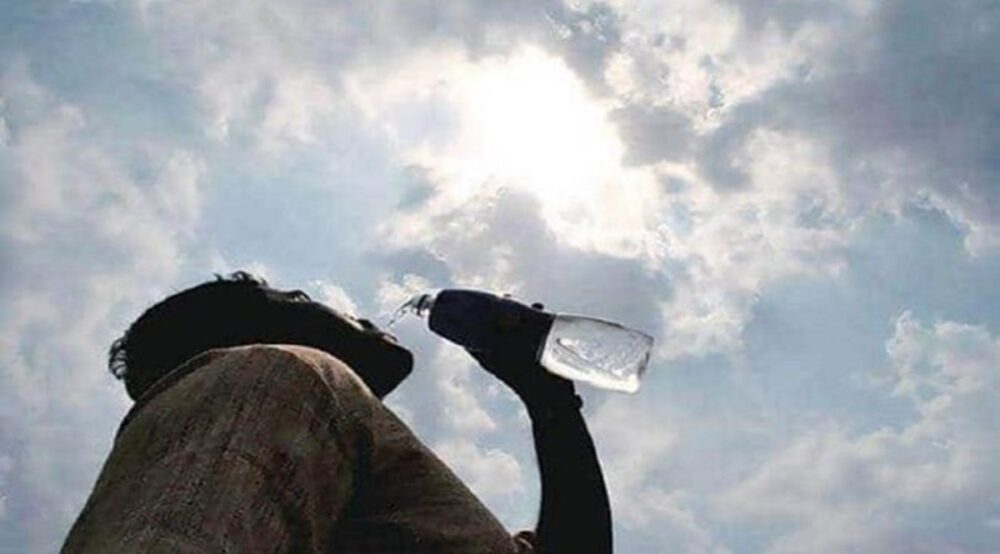
India has experienced the warmest March in 121 years. While the northwest had the greatest average maximum temperature, the central region had the second warmest March in terms of day temperatures since 1901.
According to an analysis by the India Meteorological Department (IMD), India saw its warmest March days in 121 years, with the maximum temperature across the country clocking in at 1.86°C above normal.
Large temperature variations in the northwest and central India contributed to the record-breaking result. While the northwest had the greatest average maximum temperature, the central region had the second warmest March in terms of day temperatures since 1901.
The graphs show the magnitude of the temperature anomaly, which effectively signaled the start of summer in most sections of the country. Heatwaves hit the northwest and central India in the second half of March.
The tendency, which is the result of anomalous wind patterns, has been connected to the climate issue, according to experts. “One explanation for the heat is a lack of rainfall. In the month of March, there were also two heatwaves. There was an anti-cyclonic circulation, which caused heat to be advected from the west to the north and central parts of India. One of the most important reasons is global warming. “We often record very high temperatures even during La Nina episodes,” said OP Sreejith, head, climate monitoring and forecast group, IMD, Pune.
“The lack of rainfall and constant dry and hot westerly winds blowing through northwest and central India were the key factors for such high temperatures in March this year.” We also observed that a clear sky resulted in direct exposure to the sun’s beams, causing temperatures to rise. “There are no weather systems developing in the first half of April, so similar weather conditions are likely to persist,” said Mahesh Palawat, vice-president (meteorology and climate change) at Skymet Weather Services.
In March 2022, the average maximum, minimum, and mean temperatures for the country as a whole were 33.10°C, 20.24°C, and 26.67°C, respectively, compared to the normal of 31.24°C, 18.87°C, and 25.06°C, based on 1981-2010 averages.
The average maximum temperature in northwest India was the greatest in March, with a deviation of 3.91°C over normal. With a deviation of 2.53°C above normal, the average minimum temperature – or night temperature – was the second-highest since 1901. The average daily temperature was 3.22°C above normal, which was the second hottest.
In terms of maximum temperatures, this March was the second warmest in 121 years; the third warmest in terms of mean temperatures; and the fourth warmest in terms of lowest temperatures over Central India.
In terms of daily mean temperatures, it was the warmest March in the east and northeast India; second warmest in terms of lowest temperatures, and fourth warmest in terms of maximum temperatures.
Only peninsular India saw fewer unusual temperatures: it was the ninth warmest March in terms of maximum temperatures and the fourth warmest in terms of mean temperature for southern states.
Rainfall data confirmed how dry March was, with the country’s average rainfall ranking third lowest since 1901.
The country as a whole received 8.9 mm, which is 71% less than the country’s long-term average (LPA) of 30.4 mm from 1961 to 2010. The previous time there was less rain in March was in 1909 (7.2 mm) and 1908 (7.2 mm) (8.7 mm).
The number of heatwave days in a decade has climbed from 413 in the 1981-90 decade to 575 in 2001-10, and then to 585 to 600 in 2010-20, according to HT on March 31. This highlights the impact of the climate catastrophe on maximum temperatures.
The findings come from a joint study by the Institute for Climate Change Studies (ICCS) in Kottayam and the India Meteorological Department. A team of researchers released heat wave patterns from 1961 to 2010 in a book titled “Observed Climate Variability and Change Over the Indian Region” in 2016. The analysis is still being updated.
Most of the 103 weather stations in India being analyzed for heatwave occurrence between 1961 and 2020 have either shown a growing or significantly increasing trend in heatwave frequency during the hot weather season of April-June.
Based on geographical mapping by the institution, the regions with more than 8 heatwave days on average in the April, May, and June seasons have expanded significantly spatially between 1991 and 2020 when compared to the 1961 to 1990 period.
“By tomorrow,” said KS Hosalikar, head of IMD Pune, “we will publish a statement on the synoptic factors that have contributed to unusually high temperatures in March.”